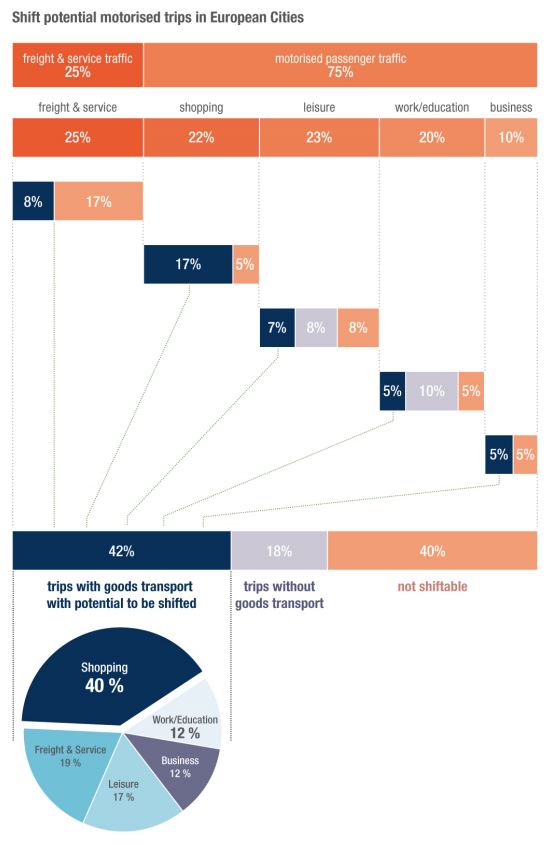
Shift to Cycling: CycleLogistics Baseline Study Reports on Impressive Potential
The CycleLogistics baseline study is out and the conclusions are impressive. Analyzing the potential to shift the transportation of goods from cars to bicycles in European cities, the study looked at both personal and professional load-bearing trips of short distances in urban areas. The conclusion? 51% of all motorised private and commercial trips related to goods transport could shift to bikes and cargo bikes.
Cargo cycling, as described by the report, has many advantages: it can utilize a denser road network, needs less parking space, there are no access restrictions and it is faster on short distances (up to 4km) and during peak hours (CycleLogistics Baseline Study, p.4). As cargo cycling is best suited for light loads and shorter distances, this form of transportation is ideal for use in city centres and urban areas.
The criteria used by the study was three-fold: trips needed to involve light goods transport (more than a handbag, less than 200kg), short enough (less than 5km for bike, less than 7km for e-bike), and not part of a complex trip chain that involves usage of a car (CycleLogistics Baseline Study, p.11).
You can read the full CycleLogistics Baseline Study here, and learn more about CycleLogistics on their website.
For professional good transportation, the study recognizes that a bit less than ½ trips involve very light cargo trips – a huge potential shift to cycling. Even for trips involving lorries and vans, many are not carrying a full load and therefore also have potential to be done by cargo cycling.
For personal trips (leisure, shopping, etc) 14% of volumes are large enough to require a bicycle trailer but only 6% required a car (CycleLogistics Baseline Study, p.8). 7/10 private car trips fall within the distance criteria formulated with CycleLogistics - in the German and Austrian cities where a survey was carried out, 1/2 of trips are shorter than 5km and 70% of all trips are shorter than 7km (CycleLogistics Baseline Study, p.10). Shopping trips, with a share of 22% of trips in urban centres, have the biggest shift potential.
What does all this mean for fuel savings and CO2 emissions? According to the study, if 1 out of 1000 trips is shifted this would save 15.000 tons of fuel/year and reduce CO2 emissions by 37.000 tons/year. So grab your panniers and be a part of this great shift!
About the Author
- Log in to post comments
Contact the author
Recent news!
Upcoming events
Contact Us
Avenue des Arts, 7-8
Postal address: Rue de la Charité, 22
1210 Brussels, Belgium












